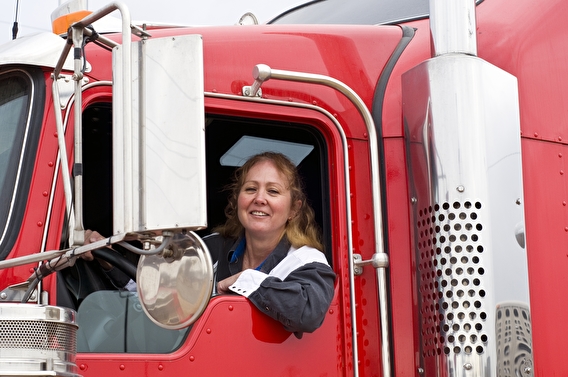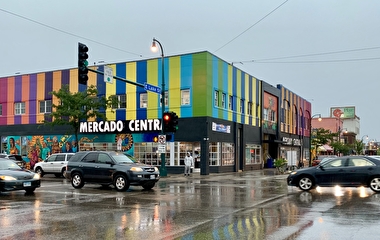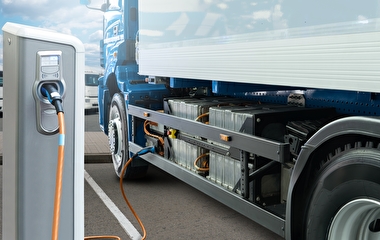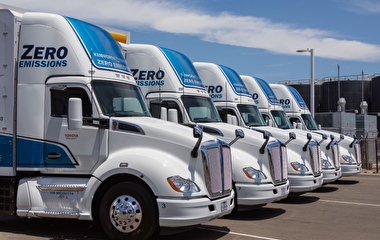
Diversity, equity, and inclusion (DEI) are becoming increasingly important factors in the modern workforce. Integrating DEI is not only a strong moral move that can set an organization apart from its peers but also a way to promote innovation, attract talent, and retain valuable employees in a tight labor market.
These were some of the common threads of the 24th Annual Freight and Logistics Symposium, held December 10. The event convened DEI and ESG (environment, social, and governance) experts from the public, private, and nonprofit sectors.
Challenges and opportunities: Awareness, talent pipeline, metrics
People are coming to expect higher levels of environmental and social responsibility from businesses, said keynote speaker Rachel Schwalbach, vice president of ESG at the global supply chain company C.H. Robinson. A range of stakeholders—including shareholders, customers, employees, suppliers, and government agencies—are putting greater value on ESG-related issues.
Meeting this expectation can be difficult for the freight industry. Supply chains are huge and sprawling, and ESG is similarly broad, complicated, and not always easy to track or control. Still, ESG is a good business move. “If you can really show that you’re setting yourself apart from your competitors in this, there could be potential for new indices, new investors, or [more] shareholders,” Schwalbach said.
Hiring and retaining talent is another business motivation for ESG and DEI. In a panel discussion, Debbie Taylor noted that all sectors of the freight industry are experiencing a tight labor market. Taylor, executive recruiter for the Edna A. Rice Executive Rail Recruiters, said there simply won’t be enough employees in the shipping industry if more women aren’t hired. Gender diversity also brings a diversity of ideas that leads to faster innovation, a better company reputation, and employees who are overall more comfortable and productive.
A major obstacle to incorporating DEI into the workplace, however, is a talent pipeline issue. Stephanie Carpentier, vice president of Vx Consultants, said that women historically have not been encouraged to work in the aviation industry or in the freight industry as a whole.
Bigger aviation companies, Carpentier said, can spare the time and resources to train brand-new DEI employees, but smaller airlines—which have a higher collective employee population—need new hires who can hit the ground running. She also pointed to a pipeline problem: “DEI in the workplace is great, but I think DEI has to start at a young age…at the high school, college level.”
Ellen Voie, president and CEO of the Women in Trucking Association, added that another barrier to DEI in the workplace is the lack of metrics and awareness. The benefits of gender diversity in the freight industry should be quantified and widely communicated, as should the hurdles that stand in its way. “Data drives DEI,” Voie said, “and so when you can stand up and say, ‘We’ve got the information,’ people will listen.”
State and federal action

At MnDOT, there is increasing awareness that equity—in particular, racial equity—needs to be taken into consideration when planning transportation systems.
Abdullahi Abdulle, MnDOT’s transportation equity planning coordinator, gave an overview of efforts MnDOT has been taking toward acknowledging and repairing the historic harms done to Minnesota’s BIPOC (Black, Indigenous, and people of color) communities. This has involved extensive research, direct conversations with affected communities, and internal evaluation of MnDOT’s own programs, policies, and processes. “Often,” Abdulle said, “decision makers do not look like the people they are making decisions for.”
A 2022 update of MnDOT’s Statewide Multimodal Transportation Plan will include language that defines transportation equity and lays out how MnDOT plans to achieve it, Abdulle said.
Alan Walt gave an overview of the US Environmental Protection Agency’s recent efforts to prioritize environmental justice. Walt, director of the EPA’s Tribal and Multi-Media Program Office, said environmental justice generally boils down to two main principles:
- No community should be left disproportionately vulnerable to adverse health or environmental effects.
- The public should be meaningfully involved in the decision-making process.
The EPA is in the process of drafting its 2022–2026 strategic plan framework. Goals include taking decisive action to advance environmental justice and civil rights, Walt said.
Collective resources for lasting change
Closing presenter Tiffani Daniels, managing director of the Minnesota Business Coalition for Racial Equity, reinforced that DEI in the workplace is good for business. “Diversity can yield strong business results and strong business performance,” she said. “Inclusion and equity are what help ensure that those business results are sustainable over time.”
Daniels also gave an overview of the Minnesota Business Coalition for Racial Equity, an organization formed following the murder of George Floyd in 2020. The coalition consists of more than 75 businesses from across different industries and sectors, all pooling their collective resources and connections to promote more equitable legislation, create opportunity for Black workers, and inspire an atmosphere of involvement and allyship across the state.
“We’ve come together in this moment as leaders to use our awareness, experience, and collective conscience to create real and lasting change,” Daniels said.
The symposium was sponsored by CTS in cooperation with MnDOT, the Minnesota Freight Advisory Committee, the Council of Supply Chain Management Professionals Twin Cities Roundtable, and the Metropolitan Council.
Writer: Sophia Koch


